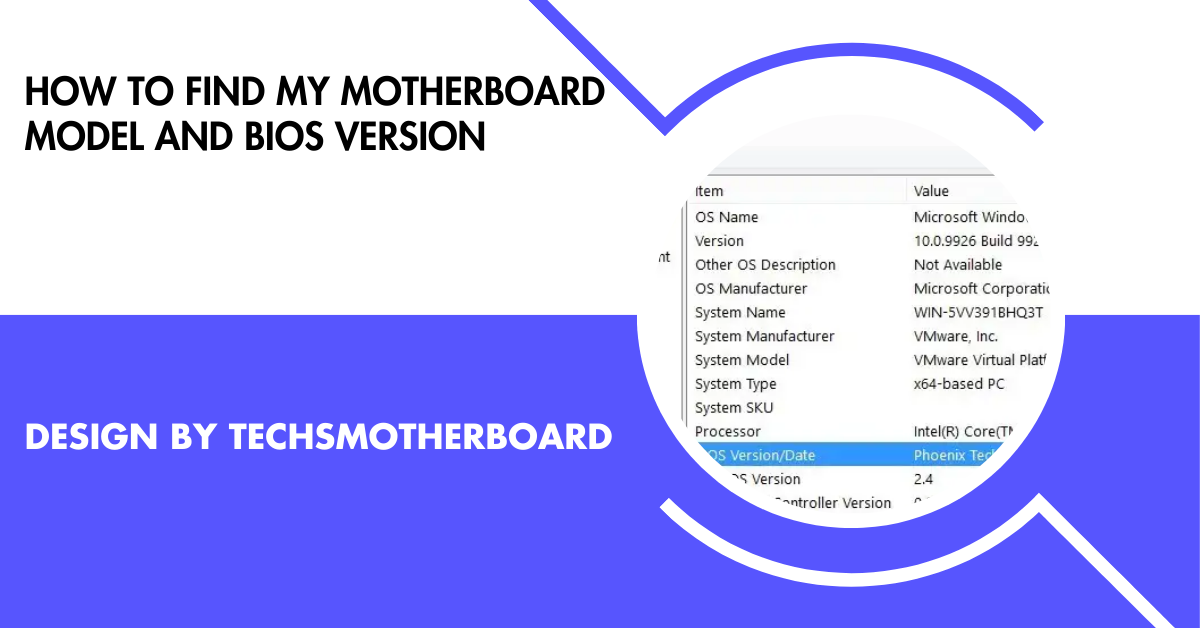Business
Small Business Legal Strategies for Every Growth Stage

Setting Up for Success: Legal Foundations for Startups
When an entrepreneur starts a business, one of the earliest—and most critical—legal decisions is how to structure the company. The choice between forming an LLC, corporation, or partnership, or remaining a sole proprietorship shapes personal liability, tax responsibilities, and even how future investments or loans can be secured. For instance, LLCs offer flexibility and protect owners’ assets, while corporations can open doors for more complex capital structures and stock offerings. Assessing which structure matches your business vision is essential, and it’s not a decision to make lightly. Proactively consulting with a Colorado business attorney helps entrepreneurs thoroughly understand the long-term implications of each option, such as how assets are divided or how debts are handled. Early legal missteps—like informal handshake agreements or failing to register with state authorities—can lead to tax headaches, partnership disputes, or even the dissolution of a business before it truly launches. Legal experts stress the importance of written agreements and formal documentation. These set expectations between partners, iron out roles, and keep everyone accountable. Resources like the Small Business Administration’s business structure guide make the decision-making process more accessible, breaking down key elements of each option and highlighting which factors matter most for different goals and growth stages.
Essential Contracts Every Small Business Needs
Contracts are a small business’s first defense against confusion, disputes, and financial loss. Every business, regardless of size or industry, relies on contracts to define relationships and transactions. From service agreements with clients to supplier contracts and employment letters, well-drafted documents articulate who is responsible for what, what deliverables are expected, and how disagreements will be handled. For example, a clear customer contract might include detailed timelines, payment milestones, confidentiality clauses, intellectual property terms, and what happens if either party can’t meet their obligations. While contract templates found online offer a helpful starting point, they rarely account for unique business nuances or evolving regulations. As a business adds new service lines or products or enters strategic partnerships, those boilerplate documents might fall short, or even leave legal gaps. Seasoned business owners often schedule periodic reviews with attorneys to ensure their contracts evolve alongside their business. Custom-drafted contracts reflect unique goals, risks, and industry standards, giving small businesses a stronger footing as they negotiate deals and grow a network of reliable partners.
Compliance: Staying on Top of Changing Laws and Regulations
Few things disrupt a small business’s plans faster than compliance missteps. State and federal agencies frequently update rules covering labor practices, health and safety laws, privacy, and advertising standards. For business owners, failing to keep up with new or amended regulations can result in heavy fines, reputational damage, or even being barred from operating in specific sectors. This is especially true for businesses working in highly regulated spaces—food services, healthcare, cannabis, or financial consulting—where a single overlooked form or expired permit can cause significant setbacks. To stay ahead, innovative businesses maintain detailed compliance calendars. These serve as reminders for permit renewals, quarterly tax filings, and scheduled policy reviews tailored to the business’s unique needs. Subscribing to email updates from state and federal agencies or joining industry associations are practical ways to receive timely alerts about changing laws. These consistent, proactive steps act as a protective buffer and keep business operations running smoothly, even as regulations evolve.
Hiring and Human Resources: Mitigating Risks
As a company expands to include employees or contractors, its legal landscape broadens significantly. Every phase of employment, from recruiting to onboarding and offboarding, comes with requirements dictated by local, state, and federal laws. For instance, failing to pay minimum wage, correctly classify workers, provide required breaks, or enforce harassment policies exposes businesses to legal action that can quickly spiral into expensive settlements or even business closures. Written job descriptions, enforceable non-compete and confidentiality agreements, and precise documentation of the hiring process all reduce the potential for misunderstandings. Equally important is maintaining up-to-date employee handbooks and policies that address performance evaluations, benefits, time off, workplace conduct, and disciplinary procedures. Many states are adding or changing rules about sick leave, parental leave, and discrimination protections, making it necessary to review handbooks for compliance regularly. By investing in thorough human resources documents, businesses create a safer, more equitable working environment, foster stronger teams, and significantly lower the chances of disruptive employment disputes.
Protecting Intellectual Property Without Breaking the Bank
Intellectual property (IP)—from logos and product designs to proprietary software and creative works—is often a business’s most valuable yet vulnerable asset. Trademarks protect your brand’s identity, copyrights secure your content, and patents can safeguard unique inventions against competitors. However, many startups underestimate the importance of registering their IP, mistakenly thinking it’s only for large corporations. A single instance of brand infringement or idea theft can derail years of hard work, forcing business owners into drawn-out disputes. Fortunately, there are practical steps entrepreneurs can take to protect their IP without overspending. Free or low-cost actions—such as adding copyright notices to materials, securely storing proprietary data, or using non-disclosure agreements—can provide foundational safeguards. Turning to expert intellectual property guidance is a smart strategy, outlining the registration process and highlighting industry-specific concerns. Formal registration with government offices in creative or tech-driven industries delivers further security and gives businesses access to real legal remedies if infringement occurs.
Preparing for Growth: Scaling Your Legal Strategy
As businesses move beyond their launch phase, legal needs become increasingly complex. Expansion may involve hiring additional staff, servicing new markets, seeking outside investment, or releasing innovative products. Each growth milestone invites new contracts, regulations, and compliance considerations. For instance, bringing on a business partner might mean updating operating agreements or restructuring the ownership model. Expanding to another state or country brings tax implications and often new licensing requirements. Growth is best supported by scheduling annual (or semi-annual) legal reviews. This ensures business registrations are current, contracts reflect recent changes, and all insurance coverage is aligned with evolving risks. Reviewing these critical elements can help a business respond quickly to new opportunities and challenges, cementing a legal foundation that can withstand rapid expansion.
Mitigating Risk: Insurance and Liability Coverage
Despite taking every possible precaution, no business is immune to unexpected setbacks. Insurance is a central pillar of a strong legal risk management strategy. General liability insurance protects against property damage and slip-and-fall accidents. If your business provides professional advice or services, errors and omissions insurance can shield you against negligence claims. Cyber insurance is essential for any operation conducting business online or handling sensitive customer data, helping cover losses related to data breaches or cyberattacks. Coverage should match the business’s size, industry, and unique risks. Policy limits and coverage terms must also change as a company evolves or enters new markets. Reviewing your insurance package with an expert each year ensures there are no gaps, helping safeguard your assets when the unexpected inevitably happens.
Staying Informed and Adapting to Trends
The world of small business law is dynamic, shaped by new technology, shifting consumer needs, and evolving regulations. Entrepreneurs who prioritize ongoing learning are inherently more resilient. Subscribing to authoritative industry resources, attending webinars, and monitoring emerging legal news enable business owners to adapt policies and practices quickly when laws change or trends emerge. For example, the shift to remote work and heightened concern for data privacy have forced many small companies to rewrite employment and cybersecurity policies almost overnight. By making continuous learning part of business culture, leaders prepare their teams to address emerging risks and opportunities with agility, awareness, and confidence, paving the way for lasting growth.
Business
From ‘For Sale’ to ‘Sold’: A Live Timeline of Home Transactions

Selling a home is a journey with clearly defined stages, but each step can come with both excitement and uncertainty. By understanding what’s coming next, sellers can set realistic expectations, minimize surprises, and confidently navigate the process. For those entering the vibrant local market, partnering with West Hartford CT real estate agents The Connecticut Agency LLC can provide valued expertise and supportive guidance from the very beginning.
Homeowners embarking on a sale often find that having a strategic approach eases their transition and can maximize their returns. Clear planning, effective communication, and knowing when to seek professional help are foundational to a stress-free experience. As you move from preparing your home to closing the deal, each phase brings distinct actions and opportunities to enhance your success.
This comprehensive guide breaks down the live timeline of home transactions, arming sellers with the knowledge to make informed decisions at each milestone.
Whether you’re selling your house for the first time or are a seasoned mover, understanding this process is essential to getting from “for sale” to “sold” smoothly.

Preparing the Home for Sale
Presentation is one of the most powerful tools a seller can use. Begin by decluttering every space, making necessary repairs, and adding curb appeal. A home that’s clean, neutral, and well-cared-for will stand out in photos and in person. Minor upgrades, such as a fresh coat of paint, updated lighting, or landscaping, can also deliver a strong first impression to potential buyers.
Professional staging services are also an option, allowing your home to be showcased at its very best. According to the National Association of Realtors, 82% of buyer’s agents said staging made it easier for their clients to visualize their prospective home, often resulting in faster and higher offers.
Listing the Property
With your home ready to shine, it’s time to list it on the market. Determining the right asking price is critical—a property priced too high can linger, while one too low might leave money on the table. A market analysis with input from a skilled agent ensures your price is both competitive and realistic. High-resolution photography and a compelling, honest description of the home’s features and benefits help capture interest and set your listing apart.
Partnering with a local real estate expert means leveraging deep market knowledge, effective negotiation skills, and professional marketing resources that may not be accessible to homeowners alone.
Marketing and Showings
Exposure is key to generating interest and offers. A combination of online listings, social media campaigns, email marketing, open houses, and signage draws attention to your property. Scheduling private showings allows prospective buyers to explore the home, ask questions, and envision how it fits their needs.
Flexibility during this phase is crucial—accommodating last-minute showing requests or weekend open houses ensures you don’t miss motivated buyers. Regular communication with your agent can also help you adapt marketing strategies as needed to maximize traffic.
Receiving and Negotiating Offers
With interest established, offers may begin to arrive. Each offer will contain specifics on price, conditions, closing dates, and other terms. Evaluate all the details, not just the dollar amount—sometimes a slightly lower offer with fewer contingencies or a faster closing can be the best choice. Negotiations often follow, involving counteroffers and clarifications. Successful negotiations typically require collaboration and realistic expectations from both sides, aiming for a win-win situation and a swift agreement.
Under Contract and Due Diligence
After an offer is accepted, the property moves into the “under contract” stage. This is when buyers do their due diligence, which may include home inspections, appraisals, and securing financing. Inspections can uncover issues leading to further negotiations or repair requests. The appraisal confirms the property’s value for the lender; if it comes in lower than the agreed price, renegotiation may be required. Staying responsive and flexible throughout this phase can prevent delays and complications.
Closing the Sale
The closing process finalizes the transaction. During this period, both parties review and sign numerous documents, title searches are conducted, and funds are transferred. Common participants include real estate agents, attorneys, title companies, and lenders. Ensuring all contingencies are satisfied—and being prepared to quickly resolve last-minute issues—will help you reach this goal. On the day the keys are handed over, your home is officially sold.
Business
From On-Prem to Cloud: How SASE Simplifies Security for Hybrid and Remote Workforces
A Shift in the Modern Workforce
The dramatic evolution of work environments in recent years has pushed organizations to adapt to new modes of operation rapidly. With remote and hybrid work models moving from an emergency solution to a long-term strategy, IT teams face increasing pressure to deliver secure access to data and applications across varied locations and devices. SASE network security has emerged as a leading solution, enabling organizations to address these challenges with a unified, cloud-first approach that follows the user, wherever work occurs.
As many organizations embrace flexible work arrangements, the traditional boundaries of the enterprise network have all but vanished. Employees tap into corporate resources from home offices, coworking spaces, and on the go—often relying on personal devices or insecure connections. This paradigm shift has compelled organizations to reassess their approach to protecting critical assets and controlling user access beyond the confines of an office, making holistic security more crucial than ever.
Traditional Security Models Struggle to Keep Pace
Classic perimeter-based security solutions, such as firewalls, VPNs, and network access controls, were designed for centralized office environments. As workforces grow more distributed, these tools become increasingly ineffective. Data flowing far outside company walls and traffic between cloud applications all challenge the effectiveness of on-premises security architectures. VPN solutions, once a mainstay of remote work, now struggle under demanding workloads, offer inconsistent user experiences, and introduce vulnerabilities when not well managed. According to an analysis by CSO Online, companies relying solely on traditional defenses face higher risks of data breaches and limited visibility over their environments.
What Makes SASE Different?
Secure Access Service Edge (SASE) fundamentally reimagines security and networking for today’s needs. By unifying advanced networking functions, such as SD-WAN, with cloud-delivered security, including firewall-as-a-service, secure web gateways, and zero-trust network access, SASE creates a holistic defense perimeter anchored in the cloud. Security policies and access controls are not limited by physical location, but rather by context, including user identity, device security posture, and real-time risk assessment. This enables organizations to provide secure, optimized access to resources, regardless of where employees or workloads reside.
Simplified Access and Security for Every User
Zero trust is at the core of the SASE model. Instead of inherently trusting devices or users simply because they connect from inside the network, SASE evaluates each interaction. This principle is especially effective for organizations with employees moving between multiple environments. Every application request is fully authenticated and authorized before access is granted. It ensures consistent enforcement of security policies, regardless of whether an employee is connecting from the corporate office, a hotel room, or a coffee shop. Workflows remain seamless, user experiences remain fast and reliable, and sensitive data stays protected everywhere.
Real-World Benefits of SASE for Hybrid Teams
Adopting a SASE framework yields tangible results for organizations managing hybrid and remote workforces. Companies report increased visibility into user activity and network traffic, which enhances their ability to track threats and respond to incidents swiftly. Policy management becomes far simpler, as security and networking configurations are handled through a single, central dashboard—allowing global rule enforcement and streamlined auditing. The risk of exposure to new vulnerabilities is minimized through ongoing threat intelligence updates, patch management, and automated response capabilities. Gartner research has highlighted that SASE helps IT teams deliver improved cloud application performance—critical for productivity when access happens from virtually anywhere.

Streamlining Compliance and Reducing Overhead
SASE simplifies compliance for organizations facing evolving regulatory landscapes. Instead of juggling multiple point solutions for data loss prevention, firewall management, and identity protection, IT teams can implement and prove controls from a consolidated interface. This unified foundation makes tasks like policy enforcement, user auditing, and evidence collection easier and less time-intensive, which in turn reduces the risk of fines and helps demonstrate ongoing regulatory compliance in sectors like healthcare, finance, and retail.
Key Features to Consider When Evaluating SASE Solutions
- Integrated Security: Choose platforms that offer robust threat protection, data loss prevention, and secure web gateways in a single solution.
- Scalability: Prioritize cloud-native architectures that dynamically adjust to your organization’s changing needs—supporting small teams or thousands of new endpoints efficiently.
- Zero Trust Support: Ensure the solution implements strict authentication and granular access controls based on real-time user and device context.
- Performance Optimization: Look for global presence, intelligent routing, and bandwidth management that keep cloud applications responsive for all users.
- Centralized Visibility: A single-pane-of-glass dashboard should deliver clear insight into all traffic and security events, simplifying monitoring and remediation efforts.
Steps to Get Started with SASE
- Assess Your Current Architecture:Catalog legacy systems, workflow gaps, and security pain points in your existing environment.
- Define Your Security Policies:Document clear, risk-based guidelines for application access, device trust levels, and incident response procedures.
- Choose the Right Partner: Select SASE vendors that align with your security standards, offer proven performance, and deliver responsive support.
- Pilot and Expand: Launch an initial rollout with a group of users, gauge outcomes, and systematically scale implementation based on feedback and results.
The Future of Secure Access for Distributed Workforces
The transition from on-premises security to cloud-first models is rapidly accelerating. SASE not only meets the current needs of hybrid and remote workforces but also positions organizations to stay ahead of future threats. By providing secure, agile, and scalable access to organizational resources—regardless of location—businesses can embrace new ways of working while safeguarding their critical data. As hybrid work establishes itself in the business landscape, rethinking security through the lens of cloud-based SASE solutions is becoming a crucial competitive advantage.
Business
The Benefits of Working With a Wealth Planner for Long-Term Success

Financial planning services help individuals and business owners effectively manage their assets throughout their lifetime. An experienced financial planner assesses your current financial situation to determine investment strategies that align with your goals. Here are some benefits of working with a wealth planner for long-term success:
Investment Management
Professional planners help affluent individuals and companies invest in the right sectors by reviewing market trends and investment opportunities. They can advise you on where to allocate your funds, including stocks, bonds, or real estate, to help increase your assets. As markets change, a wealth planner reviews your portfolio to determine whether it matches your goals. These experts can adjust your holdings by suggesting you sell or buy stocks based on your risk tolerance. If you want to build an education fund or preserve your capital, financial advisors work with you to manage risks while maximizing profit.
Tax Planning
With higher incomes and complex investment portfolios, tax laws often become more challenging to navigate. Wealth planners help identify areas where taxes may be minimized, such as through charitable giving for individuals and families. If you own a business, an advisor can help you choose the right structure, such as a limited liability company, which offers tax advantages. Placing your assets in the right accounts helps reduce your tax liability each year and grow your wealth over time. If you’re planning to sell your business or pass it on, a professional can establish a trust to streamline the transfer and minimize fees.
Estate and Trust Planning
Once you’ve generated significant wealth, financial planning services help protect what you’ve built and pass it on to the next generations. Some key estate planning options include:
- Trusts: If you own a business and other assets, trusts can safeguard them from taxes, lawsuits, and creditors who would otherwise deplete your wealth.
- Wills: With the right estate plan, transferring wealth to your loved ones often results in fewer disputes and losses. It helps determine who receives what, when, and how, according to your wishes, once you pass away.
- Charitable giving: Financial planners also help you support local organizations through charitable trusts, foundations, or donations.
Retirement Income Planning
Whether you have investment accounts, pensions, or savings, a wealth manager helps you plan your retirement income. They review these assets to create a financial plan that aligns with your lifestyle and maximizes your financial returns. To keep the money working for you, wealth planners suggest withdrawing or investing in accounts at specific times to maximize revenue.
A cash flow analysis helps financial advisors understand your monthly expenses and your income sources. This allows them to recommend a suitable savings plan or investment opportunities. When claiming benefits from Social Security and pensions, they provide information about beneficial times to begin receiving payments.
Get Started With Financial Planning Services
A wealth planner helps you prepare for retirement, allocate funds well, and manage different risks. To protect your assets and distribute them when the time comes, these professionals create several legal documents. If you’re looking to manage your wealth, call a trusted company today to learn more about their financial planning services.
-

 Tech6 months ago
Tech6 months agoSotwe STW Explained How a Radical Platform is Redefining Online Expression
-

 Entertainment8 months ago
Entertainment8 months agoHow Do I Turn On the Beatbot?
-

 Motherboard Guide1 year ago
Motherboard Guide1 year agoAre B750 Motherboard A Good Choice – A Complete Overview!
-

 Blog1 year ago
Blog1 year agoHow To Find My Motherboard Model And Bios Version – A Detailed Overview!
-

 Motherboard Guide1 year ago
Motherboard Guide1 year agoAre Gigabyte Motherboards Good – A Comprehensive Review!
-

 Blog3 months ago
Blog3 months agoHer Love Is A Kind Of Charity Password – The Hidden Meaning Behind the Phrase!
-

 Motherboard Guide12 months ago
Motherboard Guide12 months agoB75 Motherboard What Generation Cpu Is Supported – B75 Motherboard Cpu Support!
-
Motherboard Guide4 months ago
The Ultimate Croatia Travel Guide for First-Timers: Everything You Need to Know Before You Go

